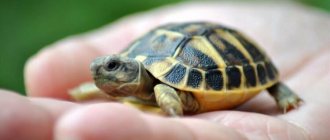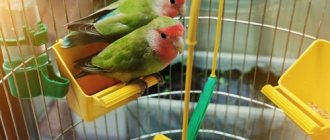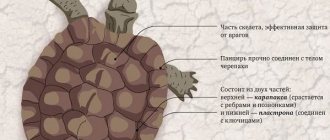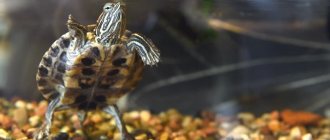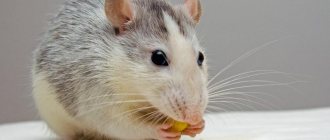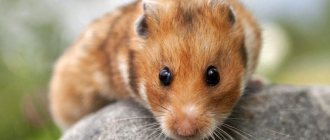The most interesting group of reptiles is rightfully the turtle. These amazing creatures can live both on the earth's surface and under water. Researchers who were engaged in archaeological excavations found that the turtle existed on earth 220 million years ago.
The diversity of turtle species includes common features.
Carapace
If you look at a photograph of a turtle, its main feature is its shell. This reliable device serves as a defense for the animal from external stimuli that pose a potential danger. It protects both from the back and the belly.
Sensing an approaching predator, the turtle can completely hide in it and remain out of reach. Experimentally, it was found that the shell can support a weight exceeding the mass of the reptile by 200 times.
Galapagos elephant
Compared to other representatives of land species, it is a giant. It grows to a body length of almost 2 m, weighing up to 400 kg. The shield covering is light brown in color, with lichens growing over the turtle's long life.
The limbs are designed to withstand the heavy weight of the owner and are covered with protective scales. The carapace is high, dome-like. It is a herbivore.
Dimensions and weight
The turtle is a phenomenal reptile. Exceptional species grow up to 2 meters and weigh up to 1000 kilograms. But there are also small reptiles that weigh no more than 120 grams and grow up to 10 cm.
Interesting facts about turtles
- The smallest turtle in the world is the Cape flat turtle. It lives in the south of the African continent. The length of the shell of adult individuals does not exceed 9-10 cm. The average weight of the animal is 240 grams.
- The speed of movement of a reptile largely depends on the weight and temperature of the environment. The slowest are giant turtles, covering no more than 4 km per hour, and the fastest are sea turtles, capable of swimming at speeds of up to 35 km/h.
- The rarest turtle in the world is the Fernandina turtle. In 2021, an adult female belonging to this species of giant tortoise was discovered on one of the Galapagos Islands. Previously, Fernandina turtles were considered extinct.
- Turtles live the longest of all vertebrates. There is a large number of documented facts that many of these reptiles lived to be 100-150 years or more. The oldest turtle in the world is Jonathan, who lives on St. Helena Island. In 2021, the reptile turned 187 years old.
- The Madagascar radiated tortoise is recognized as the most beautiful representative of the order. You can recognize it by the yellow color of its body and the unusual coloring of its carapace: numerous light stripes extend from the center to the edges of each scute.
Believe in yourself
Teeth and tongue
A strong and durable beak allows turtles to bite and grind the food they consume. It contains rough tubercles that are used as teeth. Regarding what the turtle eats, they can be pointed, like a dagger, or with edges that closely resemble teeth.
The turtle's tongue is short because it is intended only for swallowing food and not for grasping it.
Panther
The camouflage-colored shell is capable of hiding the owner in places covered with sand. Newly born individuals exhibit a clear pattern. The diet includes plant foods and insects.
Nutrition
Habitat directly affects diet. So land representatives feed on tree branches, fruits and various herbs. In rare exceptions, they eat snails, slugs and worms in order to maintain life balance.
Sea turtles, being predators by nature, are content with small fish, tadpoles, snails, and bird eggs.
Note!
Ultrasound for animals - why is it needed?Miniature pinscher (miniature pinscher): description and characteristics of the breed, maintenance and care
Orangutan - lifestyle, description, environment and habitat. Abilities and characteristics of primates (115 photos)
Types of turtles
The long stay of representatives of this order on the planet allowed them to divide into 328 species, differing in external characteristics, size, habitat, nutrition and lifestyle.
The classification involves the division of reptiles, depending on how they hide their heads in the shell, into cryptonecks and side-necks. The first group presses their head into the shell by contracting the neck muscles. The second is folded to the side, under one of the front paws.
Another classification is based on the habitat of these reptiles:
- sea turtle - lives in the salty waters of the seas and oceans;
- terrestrial - capable of living both on the surface of the earth and in fresh waters; this variety, in turn, is divided into freshwater and land.
Green turtle
This sea turtle chose the waters of the Atlantic, Pacific and even Indian oceans for its life.
There are two subspecies of these reptiles: Atlantic and eastern Pacific. Its elongated shell can be not only green, but also dark brown with yellow and white stripes or spots.
Reptiles got their name not from their external coloring, but from the color of the meat they ate.
The green turtle is one of the largest species. The length of its shell can reach up to 2 m, and its weight can reach 400 kg.
Young individuals live exclusively in water, where they feed on small fish, mollusks, and jellyfish. Adult reptiles come ashore, where they begin to feed on plant foods, which over time become their main diet.
The tasty meat of these animals was traditionally used for food (they are even called soup animals), which led to a decline in the population. Hunting them is currently prohibited in many countries.
The onset of puberty occurs after 10 years, sometimes much later. Reptiles mate in water, but lay their clutches on the shore, in the same places where their predecessors laid eggs. They dig very large holes in which they place up to 200 eggs. Small turtles, hatching, run towards the water. If they managed to get there, they will spend many years in the ocean, until the moment comes when they themselves have to go ashore to give birth.
If your pet is a sea turtle, keep in mind that caring for it at home is much more difficult than for land-based ones, since you need to have spacious aquariums with water adapted for the reptile.
Far Eastern turtle
Another name for this species is Chinese trionix, or Chinese tortoise. The Far Eastern turtle prefers to live on the silt-covered bottom of large lakes and rivers with gently sloping overgrown banks. Their habitat is Primorye, the southern part of the Amur in Russia, Vietnam, China, Japan, Korea and Taiwan.
The Far Eastern turtle is green-brown or green-gray in color with pale yellowish spots. Its usual size is about 30 cm, but there have been specimens up to 40 cm and weighing more than 4 kilograms. They have fleshy lips covering strong jaws.
The shell of these animals in young individuals has a rounded shape. It becomes flatter with age. A distinctive feature of young individuals is their bright orange abdomen, the color of which becomes pale over time.
The Chinese turtle is capable of hunting both in water and on land, where it goes out to bask in the sun. These reptiles hibernate by burying themselves in the mud.
The diet of these predatory reptiles consists of fish, shellfish, amphibians and insects. The Far Eastern turtle can guard its prey for a long time by burying itself in the mud.
At the age of 6-7 years, the Far Eastern tortoise becomes sexually mature. Usually in July they lay eggs at a short distance from the water. During the season, the female makes several clutches, from which about 70 turtles emerge. After 1.5 - 2 months, babies appear, the size of which is no more than 3 cm. They quickly run to the water and hide for a long time in coastal vegetation and between stones.
The Far Eastern tortoise has a fairly aggressive character and can strongly bite its attacker.
If this turtle lives in a house from an early age, it easily gets used to a person and can even feed from his hands.
Central Asian tortoise
Living in the southeast of Eurasia, this steppe tortoise loves wet areas in river valleys, foothills, agricultural lands, sandy and clay semi-deserts. Animals dig holes or occupy empty ones.
Observations shed light on how many years this turtle lives. It turns out that life expectancy depends on its activity. At home in a closed terrarium, it is unlikely to overcome the 15-year mark, when in the wild it can live for 30 years. Not in a natural environment, the Central Asian tortoise, even if care and nutrition are as close as possible to natural ones, lives much shorter.
The Central Asian tortoise does not grow more than 20 cm, while males are slightly smaller in size than females.
This steppe turtle hibernates quite early: at the beginning of summer, immediately after laying eggs. This is due to the fact that this particular time in their habitat is the driest. Lack of food in sufficient quantities forces them to wait out in a state of sleep.
The Central Asian turtle has a very beautiful shell - reddish-olive with dark round spots.
European tortoise (marsh)
Reptiles of this species are dark brown, dark olive, almost black in color with small yellow streaks or spots. A distinctive feature is a very long tail and the absence of a beak.
The habitat of these animals is unusually wide: they can be found in the European part of Russia, the Caucasus, Bashkiria, Kazakhstan, Turkmenistan and even in northwest Africa. They prefer forest, forest-steppe and steppe areas, the banks of slow-flowing rivers, and wetlands.
These reptiles are found in mountainous areas at altitudes of up to 1500 meters above sea level.
It is impossible to say that the European is an aquatic turtle. She prefers to get out onto land quite often and moves relatively quickly along it.
The diet of representatives of this species is unusually wide: it eats worms, mollusks, small reptiles, fish, and chicks of waterfowl. She does not disdain carrion.
Depending on the region, they become sexually mature at the age of 5-9 years. Eggs are laid near water bodies. The sex of the offspring depends on temperature. When the levels are high, females are born, while when they are low, males are born.
Unfortunately, the clutches are attacked by predators (foxes, raccoons, otters, crows), who are happy to feast on both the eggs themselves and the small turtles.
Giant turtle
Another name for these reptiles is directly related to their habitat - the Seychelles giant tortoise. This terrestrial animal is endemic to Aldabra Island.
The size of the shell of this large animal reaches a meter. It flaunts clearly defined shell segments, has fairly large legs that help it move on land, and a relatively small head.
Given its size, the reptile is a herbivore. Everything a turtle eats grows around it. She happily eats all low-growing bushes and grass.
There are currently only 150,000 left in the wild, so the reptile is protected. On the island where they live, not only hunting, but also any economic activity is prohibited.
Reptiles lay eggs from May to September, and they are able to regulate the population size: if there was not enough food, their clutches will contain only 5-6 eggs.
Galapagos tortoise (elephant)
He is the largest representative of his squad. These reptiles live only on the Galapagos Islands and are not found anywhere else. Their weight sometimes exceeds 400 kg, and the length of the shell reaches 2 m. They have fairly muscular paws, which have sharp claws (5 on the front and 4 on the hind). In case of danger, they pull their head and limbs into the shell.
At the end of the 20th century, the population of these animals decreased to 3,000 individuals, which became critical, so a decision was made to protect the reptiles.
Currently, there are two varieties of these reptiles, differing in habitat (relatively small individuals live in arid areas), size, color and shape of the shell.
Scientists actively studying the life of Galapagos endemics have identified interesting facts about turtles of this species: for example, the fact that they can eat poisonous plants that no other animal eats. In some cases, they are able to live for several months without food or fresh water.
Mating and laying of eggs of these giants occurs at any time of the year, but peaks of activity occur in certain seasons.
water turtle
This reptile is also called the red-eared or yellow-bellied. The water turtle received its original names solely for the bright accents in its color: there is a red spot on its head, and its abdomen is yellow.
There are 15 subspecies of these reptiles belonging to the American freshwater family.
The size of the animal depends on the subspecies and gender - from 18 to 30 cm, with males slightly smaller than females.
Its main habitat is America, but its presence is also noted in Europe (Spain and England), northern Africa, and Australia. For their life, they choose swampy areas with low banks, since this river turtle loves to get ashore and bask in the sun.
In Australia, the water turtle is considered a pest and its numbers are controlled.
The water turtle lays its eggs on land, where it digs out a spherical nest and places up to 20 eggs there. Reptiles of this species do not care about their offspring.
The water turtle feeds on insects, small fish, and worms. She chews her food with her head completely immersed in the water. If you have a water turtle living in your home, care and feeding should be consistent with its natural needs.
We have long found out how many years a turtle lives at home. If the maintenance and care are natural, it can easily live for half a century. In nature, this age is somewhat less.
One of the subspecies is the yellow-eared turtle. As the name suggests, its main decoration is the bright color of the shell and the yellow spot in the area of the auricle.
The yellow-eared turtle differs from its red-eared counterparts only in color. Their habitat, diet and reproduction are identical.
The yellow-eared turtle thrives at home. Maintenance and care do not require much time and do not cause much trouble for the owners.
Musk turtle
Small in size (the maximum length of the shell is no more than 13.5 cm), the reptile has chosen the American continents.
Its dirty-brown shell has three longitudinal ridges, and light stripes are visible on its head.
It lives in small rivers with silted banks, where this river turtle hunts and lays eggs.
When the water temperature drops below 10 degrees, the reptile begins to dig a hole for hibernation. Unlike many species, muskies can sleep in groups. The period of sleep itself depends not on the season, but on the temperature: in the southern regions, where there are no low temperatures, this reptile is active throughout the year and does not hibernate.
If you have a musk turtle in your home, keeping it alone is not advisable. It is better to have several individuals at once. This will affect how many years the turtle lives at home.
The musk turtle is quite common in home aquariums; keeping, feeding and caring for it does not require much effort.
Where do turtles live? Habitat
Reptiles of this order live on almost all continents of the world. The only exceptions are Antarctica and desert areas, the climate of which is completely unsuitable for these animals. Any coast - be it the oceans or small rivers and lakes - can boast of its own view, or even more than one.
They find food almost everywhere: it can be insects, worms, small fish, crustaceans and vegetation. Its unpretentiousness in food makes the reptile able to survive in almost any place.
Even in reservoirs located in large cities, you can find these animals. They go ashore to bask in the sun. During the breeding season, you can come across clutches of their eggs on deserted beaches.
Turtle at home
A turtle is a reptile that has long settled in homes, becoming a favorite pet. Home care for this reptile is insignificant, so many people choose them for their home.
How many years a turtle lives at home, first of all, depends on the species, age of the animal that comes to you, and the conditions in which it will live. Comfortable existence and feeding as close as possible to natural habitat conditions will allow your pet to live long enough. If the turtle feels good in the house, and the maintenance and care are appropriate, then it can live up to 50 years.
Which turtle is best for a home?
Usually river reptiles become pets. A river turtle, once at home, adapts quite quickly. Its maintenance does not require an overly spacious aquarium, but it is very important to equip it correctly, creating a swimming area and dry land for your pet to go to when necessary.
Suitable for keeping in the house:
- water (red-eared and yellow-eared);
- European (swamp);
- Central Asian (steppe);
- Far Eastern;
- musk turtle.
Keeping sea turtles in home aquariums is very problematic. Even young individuals require special water, reminiscent of ocean water. And for older ones, very spacious tanks are needed, since in limited spaces the animal will not be able to be active enough, and this also determines how many years a turtle lives at home.
Before purchasing an animal, get acquainted with useful information about it. Temperature, nutrition and care, activity and the ability to live alone or in pairs are very important for the reptile.
Reproduction
For different species, the mating season begins individually for each, but has characteristic similarities. Females lay eggs in depressions in the ground and compact them with sand.
The number of eggs can range from 1 to 200 depending on the type of turtle. The incubation period varies from 2 to 3 months.
Green
Lives in the oceans. She has an elongated oval shell with a brown or green color, with spots and stripes of yellow and white. Some representatives grow up to 200 cm. The diet includes jellyfish, fish, and shellfish. Adult reptiles come to land to feed on plant foods.
To reproduce, they mate in the ocean and lay eggs on land, in nests used by the previous generation. For eggs, deep holes are dug and up to 200 eggs are laid. Hatched turtles rush to the water. Those that managed to get to it do not come ashore until the moment when they have to lay their eggs.
Rivalry
Males fight fiercely for the right to mate with a female. Land turtles hit their shells against each other so that the enemy ends up on their backs or runs away.
Sea representatives pursue their rivals and gain the upper hand with menacing blows of their strong beak, forcing competitors to leave the battlefield.
Species diversity
There are more than 300 subspecies of these reptiles. The turtle's lifestyle depends on its habitat. Highlight:
- Sea turtles living in ocean and sea waters.
- Terrestrial turtles that live on the ground (terrestrial) or in rivers, lakes, and ponds (freshwater).
Economic importance
Not too large land and aquatic turtles are popular pets that are highly valued by exotic lovers . Turtle meat is widely used for food purposes and is consumed raw, boiled or fried, and the unpretentiousness of such animals makes it easier to transport live reptiles as “live canned food.” The animal's shell is used in the manufacture of such traditional women's hair ornaments as kanzashi.
Most American states allow, but discourage, pets such as turtles, but Oregon does not allow such pets. It should also be noted that federal law in America completely prohibits the trade or transportation of turtles whose size is less than 100 mm, and in the western part of the country turtle racing, which is an original fair entertainment, is very popular.
Unlike many other well-known and studied reptiles, any turtle poses virtually no real threat to human life and health. The exception is represented by male leatherback turtles, who, with the onset of mating season, are able to grab swimmers with flippers or drown them, and biting and aggressive snapping turtles can inflict a serious bite on a person.
Video
Features of handling a pet
Red-eared turtles should not be allowed on the floor. They can bite, hiss and show aggression; you should handle it carefully when picking it up; it is recommended to hold the reptile with both hands; the shell can be quite slippery. After contact with pets, hands must be washed with soap; a large number of pathogenic bacteria accumulate on the shell.
Living in their natural environment, turtles independently obtain all the vitamins and minerals necessary for health. In a home environment, the owner must independently add important elements to the feed.
Mandatory list of useful substances:
- vitamins d3, A and E;
- calcium;
- minerals.
All additives must be added strictly following the instructions and recommendations; any overdose is dangerous for the life of the individual.
Walks
A red-eared turtle kept at home needs walks in the summer. Thus, it becomes possible to get a dose of ultraviolet rays, eat healthy grass, and breathe fresh air. The place for a walk should be clean, away from the road, with lawn grass.
The temperature in the shade should not exceed 20 degrees, and the walking time should not exceed half an hour. When walking, there should be water in a visible, accessible place. In order not to lose your pet among the green grass, it is recommended to attach a bright mark, for example, orange, to the shell, it can be a sticker or a flag.
Care and hygiene
It is recommended to arrange water treatments for pets at least once a week. Waterfowl turtles need more frequent bathing or a bathing container in their terrarium. Water for bathing should be warm, but not more than 32 degrees, boiled if possible. The fluid level must be comfortable for standing with your head retracted.
During the first bath, you should carefully monitor the procedure to avoid frightening the animal. If the reptile does not feel well in the water and refuses to bathe, it is recommended to limit itself to spraying the shell and skin. If the bathing container is freely accessible inside the terrarium, the liquid must be changed every day.
It is recommended to use a cloth or sponge for washing; they must be soft. The use of chemicals is prohibited. For preventive measures against fungus, methylene purchased at a pet store is used. After each contact with water, the turtle should have the opportunity to dry and warm up under an ultraviolet lamp. She cannot tolerate temperature changes in the aquarium, which increases the risk of colds.
How to determine gender
The gender difference in turtles is so weakly expressed in appearance that it is sometimes difficult to determine whether this turtle is a “boy” or a “girl.” However, if you approach this issue with due attention, you can identify a number of signs that help determine the sex of a turtle.
1. Shell; in females the shell has a more elongated shape than in males.
2. Plastron, also known as the lower part of the shell. If you turn the turtle over, you can see that in females the lower part of the shell (the one closest to the anus) is flat, while in males it is slightly concave.
3. Tail, males have a tail that is longer and wider at the base, while “lady turtles” have a straight and short tail.
4. Claws, in males they are usually longer on the forelimbs than in females.
What to feed at home
Turtles need to be provided with a balanced diet. Can you feed land turtles?
leaves of cabbage, dandelion, pulp of apples, cucumbers, tomatoes. To meet the need for protein food, they can be given boiled chicken eggs and vitamin supplements.
Feeding aquatic turtles will be a little more difficult, because they need small animals; you can feed them with dried daphnia, bloodworms, earthworms, boiled chicken or beef. They will not mind eating various insects, cockroaches, and small aquarium fish.
Adult turtles need to be fed once a day, young turtles twice a day and a so-called fasting day once a week.
Keeping at home
Keeping turtles at home has recently become very popular, both land and aquatic turtles are kept. And why not, because caring for them is extremely simple, and turtles themselves are unpretentious creatures. True, all of the above is true for small turtles, since keeping large turtles in the house will not be entirely appropriate.
So, what are the rules for caring for turtles? First, in the turtle's habitat, you need to keep a thermometer to monitor the air temperature and a thermometer to monitor the water temperature (if it is an aquatic turtle in an aquarium).
The water in an aquarium for turtles must either be purified using filters, or if there are none, then changed every day. Maintaining hygiene for aquatic turtles involves removing algae from their shells. But land turtles need to be bathed daily in warm water, washing away dirt and food debris. Also, in winter, it is advisable to irradiate turtles a little with the rays of a quartz lamp, thus creating a kind of sunbathing.
Cape speckled
The record holders for miniature size are Cape speckled turtles , whose carapace size is 9 cm in males and 10-11 cm in females. They are light beige in color with small black spots.
Found in South Africa, in the semi-arid regions of the Cape Province. They feed on plants, mainly flowers, but they can also eat leaves and stems.
Prefers rocky soil; in case of danger, it hides under stones and in narrow crevices. It is especially active in the mornings and evenings, but in rainy weather - until noon.
4 0
Habitats
Turtles live in all tropical areas, as well as some places with temperate climates. Sea turtles swim in the warm ocean spaces of the Pacific, Atlantic and Indian Oceans. They are not found only near the Arctic and
Antarctica, which is natural, because all turtles love warmth.
Land turtles live in the steppes and semi-deserts of Africa, South and North America, Australia, and Asia. In Europe they can be found in the south, in a number of southern countries: Greece, Italy, Albania.
Varieties
Land turtles are a fairly large family of the turtle order, which includes 16 genera and about 50 species. Among those living on land, the following are the most popular and well known.
Central Asian steppe tortoise
The turtle has a yellowish-brown color with fuzzy dark spots. The shell is low and round in shape, measuring 15–20 cm. There are 4 toes on the forelimbs. Puberty occurs at 10 years of age. Distribution area: countries of Central Asia, Iran, India, Afghanistan. This is the most popular type for keeping at home. With good care they can live for 30 years or more.
Mediterranean turtle
Other names: Caucasian, Greek. The color palette of the carapace contains olive, yellow and brown, and black spotty inclusions may be observed. The shell is high, the size of an adult turtle is 28 – 35 cm.
Distribution area: Southern Europe, South-West Asia, North Africa. Suitable for home use. It is best to buy an adult, as young turtles do not tolerate relocation well.
Land leopard (panther) tortoise
The turtle is sandy yellow in color with a dark brown spotted pattern. True to its name, its color resembles that of a leopard. The turtle is quite large, 70–80 cm, with a dome-shaped shell.
Distribution area: Africa. For this species, the terrarium must have a pond. Lives at home for 50 years or more. It eats only grass.
Egyptian land tortoise
It has a yellow-brown color. One of the smallest of the land turtles. The size of males does not exceed 10–12 cm, females are slightly larger.
Distribution area: Middle East and North Africa. When kept at home, the temperature in the terrarium should not fall below +24–25°C. In case of danger, the turtle quickly buries itself in the sand.
Balkan tortoise
The turtle's shell is yellow-brown with black spots on it. The carapace dimensions are 15–20 cm. This species has a long tail with a conical spike at the end.
Distribution area: Southern Europe. Life expectancy in natural conditions exceeds the 90-year mark.
Star turtle
A very beautiful turtle. The color of the carapace is dark brown or almost black, on which there are star-shaped spots of yellow color. The carapace is strongly convex, oval in shape, 15–25 cm long.
Distribution area: India, Sri Lanka, Pakistan. Suitable for keeping in captivity, will decorate any terrarium, life expectancy is 80 years.
Elephant (Galapagos) tortoise
The largest of the land turtles, its length reaches 180 cm, and its weight is 400 kg or more. They live more than 150 years, including in captivity. The brown-black shell of turtles living in highlands is dome-shaped, while that of turtles living in lowlands is saddle-shaped.
Distribution area: Galapagos Islands.
Tuberous
Its other name is terrapin . This is a species of freshwater turtle that lives in the salt marshes of the United States, in the coastal area. The lump turtle is gray, but can also have brown, white or yellow skin, covered with a gray or brown shell. Its diameter is 19 cm in the female and 13 cm in the male, but larger specimens are also occasionally found.
Body length is from 18 to 22 cm in females, and 13-14 cm in males. They weigh about 250-350 g. These turtles eat crabs, shellfish, small fish, and occasionally indulge in marsh vegetation.
They themselves suffer from attacks by raccoons, skunks and even crows. Local residents also love their meat, so this species is bred on farms. They were once the main food of European settlers, and in the 19th century they became a delicacy. In nature they can live up to 40 years.




